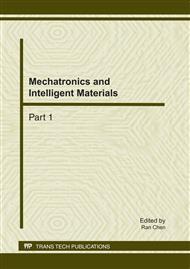p.1105
p.1110
p.1115
p.1119
p.1124
p.1129
p.1133
p.1137
p.1142
Fuzzy Multiple-Periods Time-Series Model Based on GSP and AR for Forecasting Gold Price
Abstract:
In the recent years, traditional time series model has been widely researched. The previous time series methods can predict future problems based on historical data, but have a problem that determines subjectively the length of intervals. Song and Chissom[6-7]proposed the fuzzy time series to solve the problem of traditional time series methods. So far, many researchers have proposed different fuzzy time series models to deal with uncertain and vague data. Besides, the consideration of a forecasting stage only discusses the relations for previous period and next period. In addition, a shortcoming of previous time series models didn’t consider appropriately the weights of fuzzy relations. This study builds fuzzy rule based on association rules and compute the cardinality of each fuzzy relation. Then, calculating the weights of fuzzy relations solve above problems. Moreover, the proposed method is able to build the multiple periods fuzzy rules based on concept of large itemsets of Apriori. To verify the proposed model, the gold price datasets is employed as experimental datasets. This study compares the forecasting accuracy of proposed model with other methods, and the comparison results show that the proposed method has better performance than other methods.
Info:
Periodical:
Pages:
1124-1128
Citation:
Online since:
February 2011
Authors:
Price:
Сopyright:
© 2011 Trans Tech Publications Ltd. All Rights Reserved
Share:
Citation:


